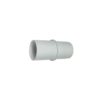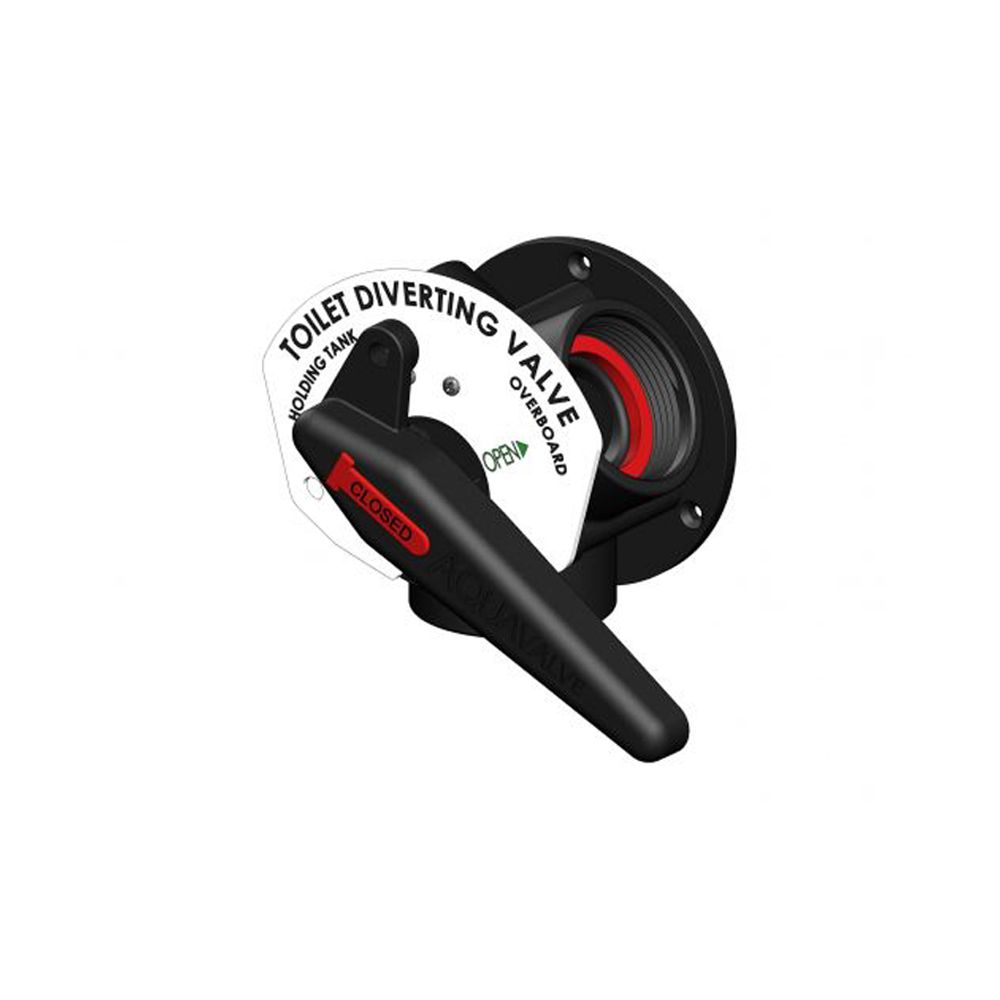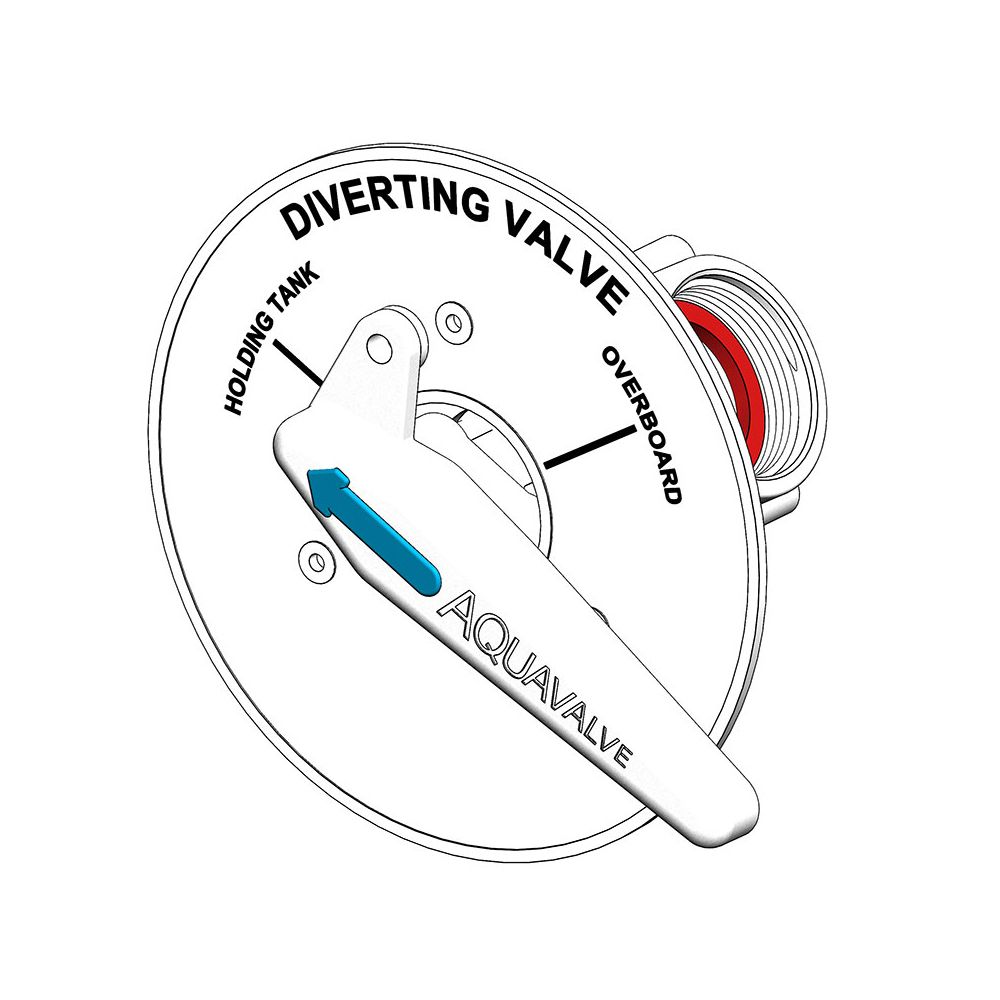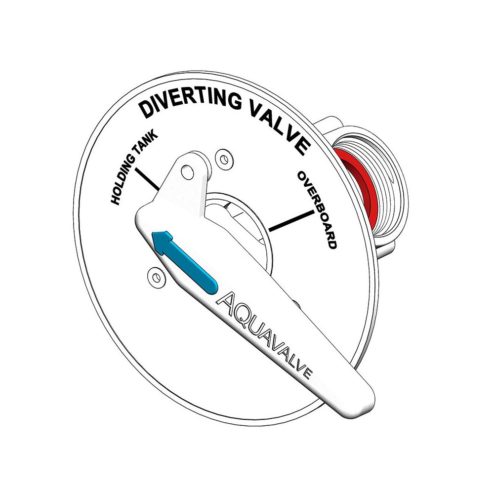TruDesign Aquavalve
£88.20 Original price was: £88.20.£70.99Current price is: £70.99. Inc VAT
TruDesign Aquavalve for diverting black and grey waste to either a holding tank or overboard.
 Please select the size and type of hosetails you require from the Aquavalve Hosetail product section.
Please select the size and type of hosetails you require from the Aquavalve Hosetail product section.
Documentation
TruDesign Diverter Valve

Features
- Manufactured from a glass reinforced nylon composite – High strength and light weight.
- Stainless steel fasteners – Will not corrode in salt laden air.
- Easy installation – With a range of straight, 90° and 120° tails, and two seal options, plumbing in confined spaces is made easy.
- Handle position lockable – Legislation in some regions require the overboard discharge handle to be locked into the holding tank position when in ‘no discharge’ zones
- Available in black or white – Fits in with colour schemes in plumbing areas allowing easy identification of components.
- Pressure tested – All valves are pressure tested to ensure quality and safety in respect to sealing and operation.
- Silicon seal – The Aquavalve® is the only valve on the market today with smooth movement and an excellent seal with good wear resistance.
- Composite spanner included – Avoids using pipe wrenches that gouge the fitting. Facilitates access in tight places.
- Fascia plate on standard model can be removed to reveal simple “open – open – inlet” labeling – Where product is not used for marine toilets, all toilet references are removed.
- Large operating temperature range – Suitable for all marine environments, from -40°C to +110°C
- Note bulkhead hole diameter for Aquavalve through Bulkhead is 49.0mm
For vacuum-operated toilets, it is advised that the valve be placed in the non-vacuum side of the installation.
Holding Tank Layouts showing where a diverter valve can be incorporated in marine sanitation systems.
3D Interactive Model
Frequently Asked Questions
How to service the Manual Aquavalve
If your Aquavalve has not had the handle turned for over 12 months the chances are that the valve can become tight to turn or even jammed in the case of very high salt build up.
Tools required: Philips screw driver, felt pen, rubber gloves, bucket & towels.
Step 1: Mark the top face of the printed plate with a felt pen so it goes back on the same way as this plate has reverse printing on the other side.
Step 2: Unscrew the two screws on the printed plate and remove this plate.
Step 3: Mark the next plate which has printed OPEN & INLET and the body so it can be put back in the same position
Step 4: Unscrew the three screws on the face plate but before trying to remove the rotor have a bucket or old towels close to stop any liquid that may be in the pipes.
Step 5: Grab hold of the handle and turn and pull the handle, with the attached rotor and seals, out of the body.
Step 6: With the rotor and seal removed clean out the body where the seal fits.
Step 7: Take the curved seal off the rotor pad and clean it in hot water (use of rubber gloves advised).
Step 8: Fit the cleaned seal back on the rotor pad then assemble this on the rotor.
Step 9: Grease the curved seal with silicone grease and the O-ring in the body and assemble the rotor into the body by turning while pushing the rotor in place. Line up the felt pen marks on the printed plate and screw in the 3 screws – do not over tighten!
Step 10: Fit the printed plate back on in its original position with pen mark and screw in the 2 screws. The Aquavalve should now turn freely and providing it is turned every month or two will work fine for over 12 months. We suggest yearly servicing and in the case of a damaged seal there is a seal kit (part number 90316) available.
| Weight | 0.5 kg |
|---|---|
| Colour/Type | White, Black, Through Bulkhead |
Related products
Adapters
Loops, Diverters and Connectors
Sanitation Deck Fittings
Loops, Diverters and Connectors














